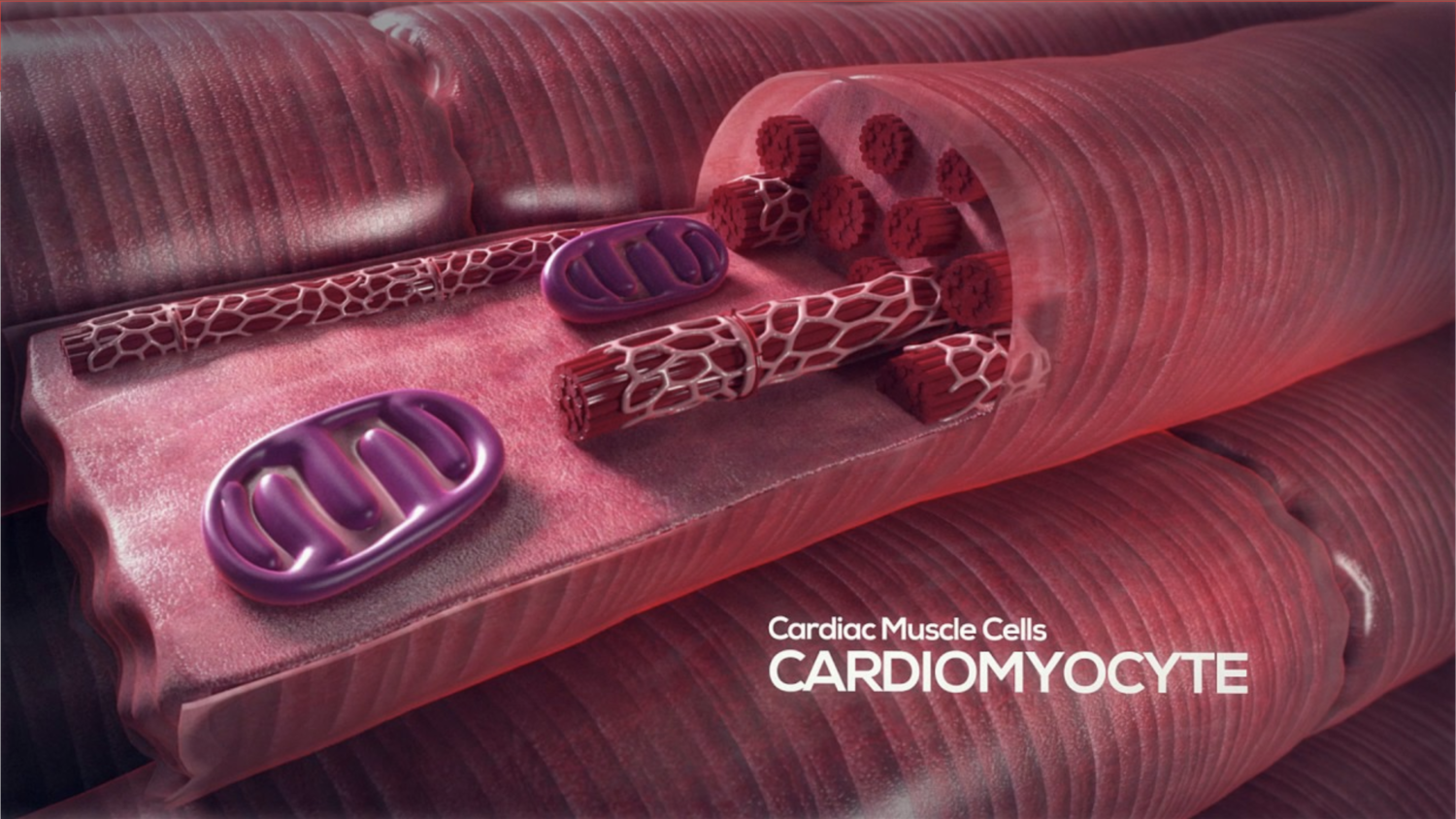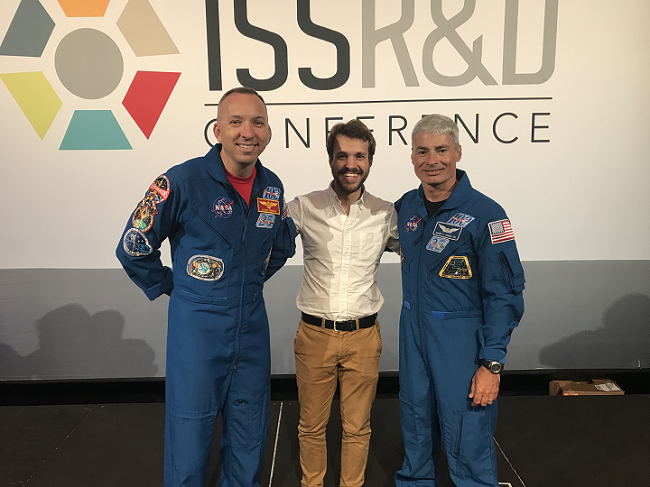Although it might take years before 3D bioprinting takes center stage in medicine everywhere, the companies behind the technology are certainly giving it the momentum it needs, partnering with university labs and research facilities at some of the biggest firms on the globe. One of the big players trying to break the boundaries of bioengineering is Allevi, leading the way with their easy-to-use and cost-efficient bioprinters and one-of-a-kind software. But it’s not just about the mechanics of bioprinting for Ricky Solorzano, founder and CEO of Allevi: it’s all about the cells.
“The hardest part about bioprinting are the cells, but most of the users of our bioprinters already understand them and know that these living organisms are smart and can recognize and react to all the forces surrounding them. We make our printers for the researcher, the scientist who has been working with cells in the lab for a long time, and for them it is a very easy experience. Part of what we know and what we try to convey with our machines, is how to keep the cells alive during the printing process and what materials can help with this,” Solorzano told 3DPrint.com.
The goal at Allevi is to make “really awesome platforms”, and so they do a lot of work to make the experience of designing, executing and printing biomaterials and bioinks as easy and as powerful as possible.
“We are empowering the research labs to be able to execute their ideas. We are giving scientists, researchers and doctors the opportunity to push their creativity at a price that is cost-effective, and to us it doesn’t matter if the ideas are amazing, good or even if they don’t work at all, we are offering a chance to try them out,” explained Solorzano. “We maintain vigilant to understand what the best applications are and continue to invest in them, while working with so many different users to maintain the versatility of the company.”
According to Solorzano, an engineer with years of lab experience at the University of Pennsylvania, the best applications for this technology “probably lie in both the bone and cancer space,” although nothing has materialized just yet, while the money to be made today is in tissue modelling for drug screening.
With a family of printers ranging from $10,000 to $100,000, the company, founded four years ago, is certainly represented in the competitive bioprinting market. What differentiates the more pricey printers is the number of heads, which correlates to the complexity of the tissue that can be created, including the number of cell types researchers can design with it and how fast they can create them. Allevi’s line of bioprinters serves the research community at a variety of universities as well as pharmaceutical companies, including Johnson & Johnson, Abbvie, GSK, MIT, Stanford and the University of Sheffield. The Philadelphia-based firm is looking forth into 3D bioprinting custom replacement valves from your own heart cells to eventually reduce the rate of failure and rejection in heart transplants. Scientists at George Washington University have been using the printer to bioprint heart tissue. While a team at UC San Diego has bioprinted a section of spinal cord that can be custom-fit into a patient’s injury, and researchers at Brigham and Women’s Hospital & The University of Nebraska Lincoln collaborated using an Allevi 2 bioprinter to find a solution to better surgically connect blood vessels. In 2017, Northwestern University developed a form of 3D printed hyperelastic bone that not only encourages bone regrowth within the body, but actually grows with it.
“We started Allevi with the mission to make it easier to engineer and design 3D tissue. Four years ago we decided to make small, powerful and easy-to-use bioprinters, instead of the large, clunky and expensive printers that were big players in the bioprinting realm. After we sold our first prototype, we just kept making them. Our machines are powerful and easy to use because we think about all the stages of the bioprinting process, focusing on simplifying each step and making the experience pleasant.”
More recently, Allevi has been focusing on building software that makes printing very easy for its users. The real cost in 3D printing biological models is not just materials or printers, but also the software used to translate the scans into files for the printer. There is a lot of complexity that goes into 3D bioprinting, like the design, the materials selected, the temperature needed or even the pressure, are all variables that the researcher needs to think about. But Solorzano and Allevi take that complexity and mask it behind simplicity by adding standardization to its software.
“Four years ago, when you were dabbling into software for 3D bioprinting, you had 100 different options and now you only have between five and ten, so abstracting away the complexity is really where we make the whole process easy and it’s also part of the Allevi mark,” Solorzano said. “People buy our software because by adding the standarization we allow people to bring their specific knowledge on a tissue, while we provide the platform to make it a reality in just three simple steps.”
Standardization might just be what bioprinting is looking for, according to Solorzano.
“As we get closer to standarizing engineering principles in biology we will be seeing more college graduates go into the workforce without needing a masters or doctoral degree, making bioengineering one of the jobs of the future, which will have more impact and a higher pay at an earlier standpoint, still, we need the tools to provide that mask of standardization.”
Training middle school and high school students in bioprinting technology is a good way to pave the way into the future, which is why the company created the Allevi Academy, a curriculum for high schools interested in teaching bioprinting to students, which begins with a crash course in bioinks and different strategies for bioprinting, like making small blood vessels in a gel.
Since 2018, Allevi has been working with California-based 3D printing and space technology firm Made in Space, which is responsible for introducing 3D printing to the International Space Station (ISS) four years ago, to develop the Allevi ZeroG – the first 3D bioprinter in space. This is a project that Solorzano finds very exiting, especially because it is a gateway to understanding how microgravity has an effect on biology and the different tissues that make up the human body. Allevi developed a compatible extruder, fittingly called the ZeroG bio-extruder, that is able to be outfitted onto Made In Space’s Additive Manufacturing Facility currently on board the ISS. This new bio-extruder will make it possible for scientists using the Allevi 3D bioprinting platform to run experiments in space, and back home on Earth, at the same time, in order to observe and study any biological differences that happen when 3D printing with gravity and without it.
“Bioprinting on the space station will help us understand various different scientific questions, such as, how does a heart or bones react to microgravity over long periods of time, or how would space change the human biologoy over long time spans. These are all valid questions, especially if we start thinking about sending astronauts to the moon or Mars, which means they will be out of Earth for a year and a half. If we could only test how tissues will behave during that time in space before humans actually take the trip, would surely help us understand the biological processes of our bodies in microgravity. But all these questions become more realistic if we have more tools for biology in space, which is why we want to provide affordable and easy to use printers to test bioprinting in the ISS,” Solorzano concluded.
Having this technology paves the way into a transformative future where cells become the protagonists, not only on Earth, but also in space. It is through this living, smart organisms that bioprinting is allowing researchers to create functional tissues out of human cells, and predicting how they will behave in a lab, this is without a doubt the future of medicine, and Allevi is creating the means to make it possible. Making bioprinting simpler will provide new avenues that were not thought of before where 3D printing can become a very unique and valuable tool that could in the future save lives.
Subscribe to Our Email Newsletter
Stay up-to-date on all the latest news from the 3D printing industry and receive information and offers from third party vendors.
You May Also Like
Precision at the Microscale: UK Researchers Advance Medical Devices with BMF’s 3D Printing Tech
University of Nottingham researchers are using Boston Micro Fabrication‘s (BMF) 3D printing technology to develop medical devices that improve compatibility with human tissue. Funded by a UK grant, this project...
3D Printing Webinar and Event Roundup: April 21, 2024
It’s another busy week of webinars and events, starting with Hannover Messe in Germany and continuing with Metalcasting Congress, Chinaplas, TechBlick’s Innovation Festival, and more. Stratasys continues its advanced training...
3D Printing Webinar and Event Roundup: March 17, 2024
It’s another busy week of webinars and events, including SALMED 2024 and AM Forum in Berlin. Stratasys continues its in-person training and is offering two webinars, ASTM is holding a...
3D Printed Micro Antenna is 15% Smaller and 6X Lighter
Horizon Microtechnologies has achieved success in creating a high-frequency D-Band horn antenna through micro 3D printing. However, this achievement did not rely solely on 3D printing; it involved a combination...


































